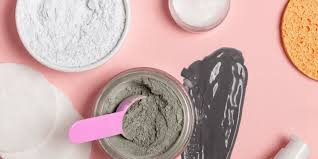
The Science of Kaolin (White Clay) in Skin Care: A Comprehensive Guide
In the ever-evolving world of skin care, certain ingredients stand out for their versatility, gentleness, and effectiveness.
Kaolin clay—also known as white clay or China clay—is one such remarkable component.
Celebrated for its soothing properties and ability to purify without stripping the skin, kaolin has secured a firm place in many skin care products and routines around the globe.
Unlike other clays, which can sometimes be too harsh for regular use, kaolin is notably mild and thus suitable for nearly every skin type, including sensitive and dry skin.
Its oil-absorbing yet non-drying characteristics make it especially beneficial for individuals with oily or acne-prone skin.
In this comprehensive article, we’ll delve into the science behind kaolin clay, explore its chemical composition, and examine its many roles in modern skin care.
We’ll also offer guidance on how to incorporate it into your daily or weekly routine to achieve a clearer, healthier complexion.
What Is Kaolin Clay?
Kaolin clay is a soft, white powder derived from natural mineral deposits.
It was first discovered in China—specifically in the Kao-ling (or Gaoling) mountain region—which is where the name “kaolin” originates.
The clay is primarily composed of the mineral kaolinite, a silicate material that is naturally rich in silica, aluminum, and other trace minerals.
For centuries, kaolin has been used not just in skin care, but also in the production of porcelain, paper, and paint.
In dermatology and cosmetic science, it has garnered acclaim for its cleansing, detoxifying, and balancing properties.
What sets kaolin apart from other types of cosmetic clays, such as bentonite or fuller’s earth, is its gentleness.
While other clays may be better suited for oily or tough skin types due to their powerful drawing and drying effects, kaolin strikes a rare balance between efficacy and softness.
It cleanses the skin effectively while maintaining its natural moisture barrier, making it ideal even for those who experience flaking, irritation, or redness.
Chemical Composition and Active Compounds in Kaolin
Kaolin’s effectiveness in skin care stems from its unique composition. Its primary component, kaolinite, is a hydrous aluminum silicate.
Here’s a breakdown of its key constituents and their skin care benefits:
Silica: A naturally occurring mineral that gently exfoliates the skin, silica helps remove dead skin cells from the skin’s surface, leading to a smoother and more radiant complexion.
It also supports collagen production, improving elasticity and firmness over time.
Aluminum Silicate: Known for its mild absorbent properties, aluminum silicate helps draw out impurities such as dirt, oil, and environmental toxins without over-drying the skin.
Trace minerals: Kaolin often contains small amounts of other minerals like magnesium, calcium, and potassium. These elements support skin health by promoting healing and maintaining hydration balance.
This harmonious blend of minerals works synergistically to cleanse, exfoliate, soothe, and balance the skin.
Skin Benefits of Kaolin Clay
Kaolin clay is an ingredient that brings a multitude of skin-enhancing benefits to the table. It is often recommended by dermatologists and estheticians for its gentle yet effective properties. Whether your skin is oily, acne-prone, sensitive, or dry, there’s a good chance kaolin can offer meaningful benefits.
1. Deep Cleansing and Detoxifying
One of kaolin clay’s most celebrated functions is its ability to deep-clean pores.
The fine particles in kaolin clay can penetrate the skin surface to extract impurities like dirt, pollution, bacteria, and excess sebum.
It performs this task gently, unlike harsher ingredients that might strip away the skin’s natural oils.
This pore-cleansing ability makes kaolin an excellent preventative measure against blackheads, whiteheads, and acne breakouts.
2. Gentle Exfoliation
Kaolin clay has a mild exfoliating effect that doesn’t rely on physical abrasion.
When applied as a mask or cleanser, it helps to lift away dead skin cells from the surface of the skin, improving skin texture and promoting a more even tone.
Because it’s non-abrasive, it’s a great alternative to gritty scrubs that can damage sensitive skin or cause microtears.
3. Oil Control
Excess oil is one of the primary contributors to acne and enlarged pores. Kaolin clay absorbs sebum without triggering a dehydration response from the skin.
This is especially important because overly drying the skin can lead to a rebound effect, where the skin starts producing even more oil.
Kaolin keeps oil in check while preserving hydration, helping maintain the skin’s natural equilibrium.
4. Acne Management
Kaolin is a powerful ally in the fight against acne. Its ability to absorb oil, reduce pore congestion, and soothe inflammation makes it highly effective in managing and preventing breakouts. Additionally, kaolin’s anti-inflammatory properties help reduce redness and swelling associated with active pimples.
5. Soothing Irritated Skin
Those with conditions like rosacea, eczema, or general skin sensitivity can benefit from kaolin clay’s calming properties.
It helps to reduce redness and inflammation, and when used in a mask or cream, it can have a cooling, comforting effect on the skin.
6. Maintaining pH Balance
Kaolin clay has a neutral pH, meaning it doesn’t disrupt the skin’s natural acidity.
This is crucial for maintaining a healthy skin barrier, which defends against environmental stressors, bacteria, and moisture loss.
Products with extreme pH values—either too acidic or too alkaline—can disrupt this barrier, leading to irritation or breakouts.
Potential Side Effects
Kaolin is generally regarded as a non-irritating and safe skin care ingredient, even for people with allergies or sensitivity to other topical treatments.
However, as with any skin care ingredient, there are a few precautions:
Overuse: Using kaolin too frequently—especially in mask form—can lead to dryness in some individuals.
If your skin starts feeling tight or flaky, reduce application frequency to once or twice per week.
Allergic Reactions: Though rare, it’s possible for some individuals to react to kaolin or other ingredients in kaolin-containing products.
Always patch-test new products before applying them to your face.
Where You’ll Find Kaolin in Skin Care
Kaolin is a staple in a wide variety of skin care and cosmetic products:
Face masks: This is one of the most common applications. Kaolin masks are often combined with ingredients like aloe vera, charcoal, or green tea to amplify their soothing and detoxifying effects.
Cleansers: Some gentle cleansers contain kaolin for its purifying properties, making them ideal for daily use without stripping the skin.
Moisturizers: Especially for acne-prone skin, moisturizers with kaolin can help control oil production while still providing necessary hydration.
Foundations and powders: Kaolin can improve the texture of makeup products, allowing them to glide smoothly over the skin while offering oil control.
Eye shadows and blushes: In color cosmetics, kaolin helps absorb oil and sweat, making the makeup more long-lasting.
How to Use Kaolin Clay in Your Skin Care Routine
The best way to incorporate kaolin into your routine depends on your skin type and goals:
Oily or acne-prone skin: Use a kaolin clay mask 2–3 times per week to help reduce oil and prevent breakouts.
Dry or sensitive skin: Limit use to once a week, and follow up with a rich moisturizer to maintain hydration.
Daily use: Choose a cleanser or lightweight moisturizer that includes kaolin if you want its benefits in your everyday routine.
Products like the Vichy Normaderm PhytoAction Acne Control Daily Moisturizer, which includes kaolin, salicylic acid, and hydrating agents, are great for multitasking skin needs.
Final Thoughts
Kaolin clay has earned its reputation as one of the most versatile and skin-friendly clays available.
Its gentle yet effective properties make it ideal for cleansing, exfoliating, balancing oil levels, and calming inflamed or sensitive skin.
Whether you’re dealing with acne, dullness, excess oil, or irritation, kaolin can be a valuable addition to your routine.
Thanks to its neutral pH and non-stripping formula, it plays well with almost every skin type.
However, it’s always wise to select products based on your specific skin type (such as the Baumann Skin Type system) to maximize benefits and minimize potential side effects.
Incorporating kaolin into your skin care regimen can be a simple yet transformative step toward clearer, healthier skin.


